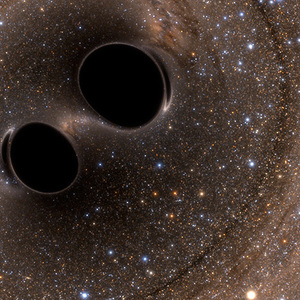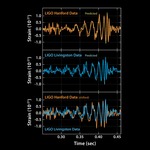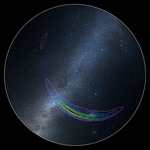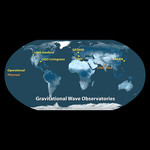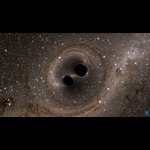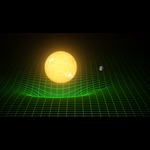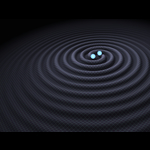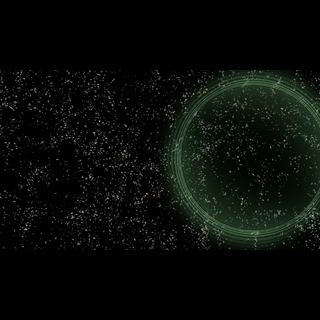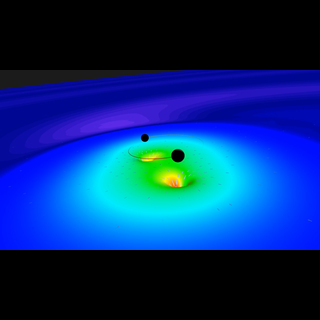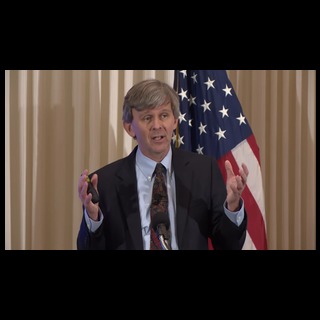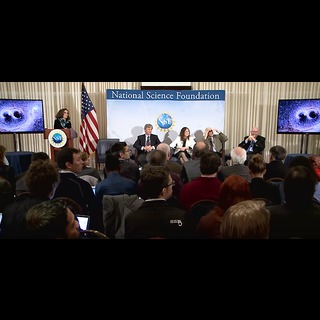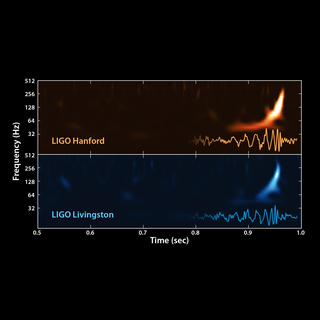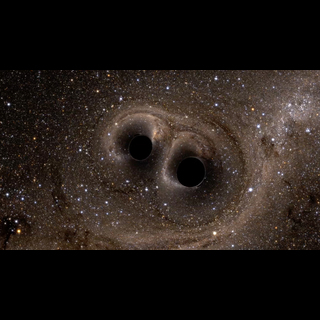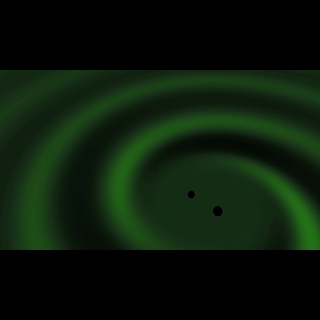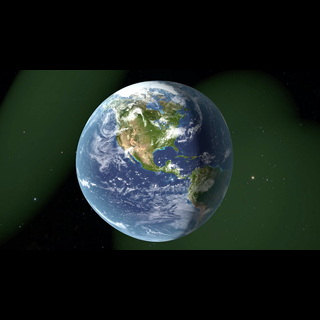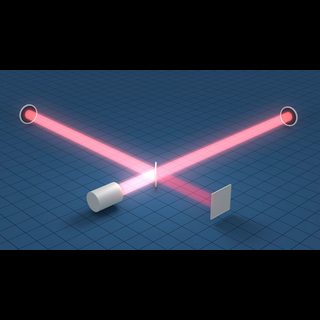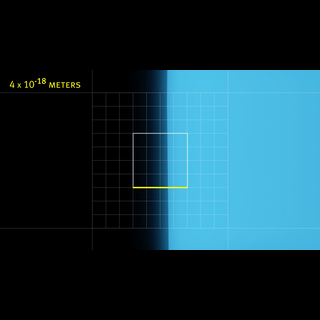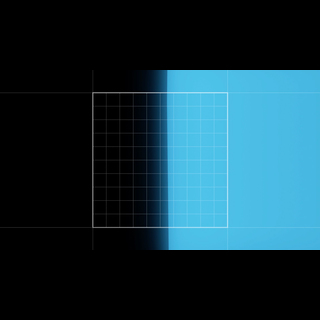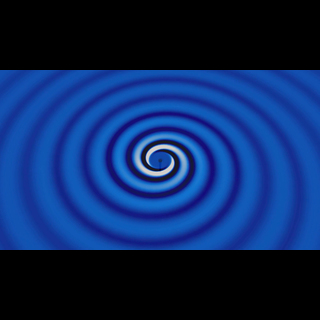Warped Space and Time Around Colliding Black Holes
Animation created by SXS, the Simulating eXtreme Spacetimes (SXS) project (http://www.black-holes.org)
This computer simulation shows the warping of space and time around two colliding black holes observed by LIGO on September 14, 2015. LIGO detected gravitational waves generated by this black hole merger—humanity's first contact with gravitational waves and black-hole collisions. Gravitational waves are ripples in the shape of space and flow of time.
The colored surface is the space of our universe, as viewed from a hypothetical, flat, higher-dimensional universe, in which our own universe is embedded. Our universe looks like a warped two-dimensional sheet because one of its three space dimensions has been removed. Around each black hole, space bends downward in a funnel shape, a warping produced by the black hole's huge mass.
Near the black holes, the colors depict the rate at which time flows. In the green regions outside the holes, time flows at its normal rate. In the yellow regions, it is slowed by 20 or 30 percent. In the red regions, time is hugely slowed. Far from the holes, the blue and purple bands depict outgoing gravitational waves, produced by the black holes' orbital movement and collision.
Our universe's space, as seen from the hypothetical higher-dimensional universe, is dragged into motion by the orbital movement of the black holes, and by their gravity and by their spins. This motion of space is depicted by silver arrows, and it causes the plane of the orbit to precess gradually, as seen in the video.
The upper left numbers show time, as measured by a hypothetical person near the black holes (but not so near that time is warped). The bottom portion of the movie shows the waveform, or wave shape, of the emitted gravitational waves.
The gravitational waves carry away energy, causing the black holes to spiral inward and collide. The movie switches to slow motion as the collision nears, and is paused at the moment the black holes' surfaces (their "horizons") touch. At the pause, space is enormously distorted. After the pause, again seen in slow motion, the shapes of space and time oscillate briefly but wildly, and then settle down into the quiescent state of a merged black hole. Returning to fast motion, we see the gravitational waves from the collision, propagating out into the universe.
The collision and wild oscillations constitute a "storm" in the fabric of space and time—an enormously powerful but brief storm. During the storm, the power output in gravitational waves is far greater than the luminosity of all the stars in our observable universe put together. In other words, this collision of two black holes, each the size of a large city on Earth, is the most powerful explosion that astronomers have ever seen, aside from our universe's birth in the Big Bang.
- Date
- February 11, 2016
- ID
- ligo20160211v10
- Type
- Simulation
- Credit
- SXS

